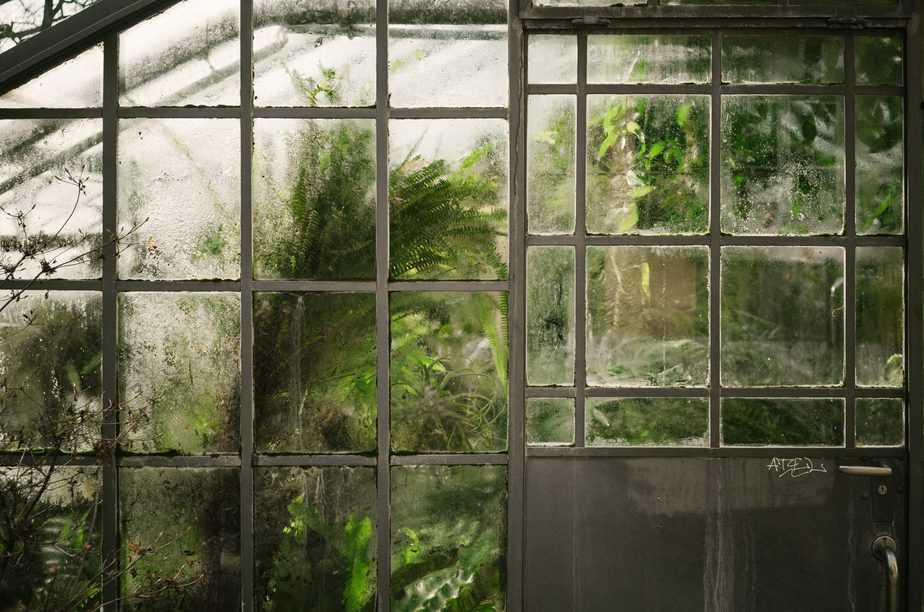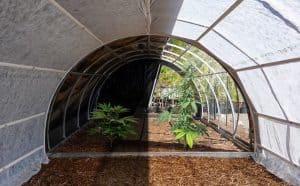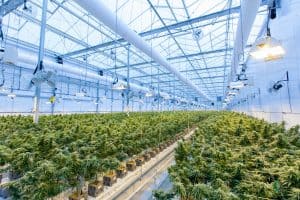Believe it or not, there are a wide variety of crops that can withstand Fall and Winter weather in your greenhouse. There are even some that thrive in cooler temperatures! So, can you grow a winter greenhouse?
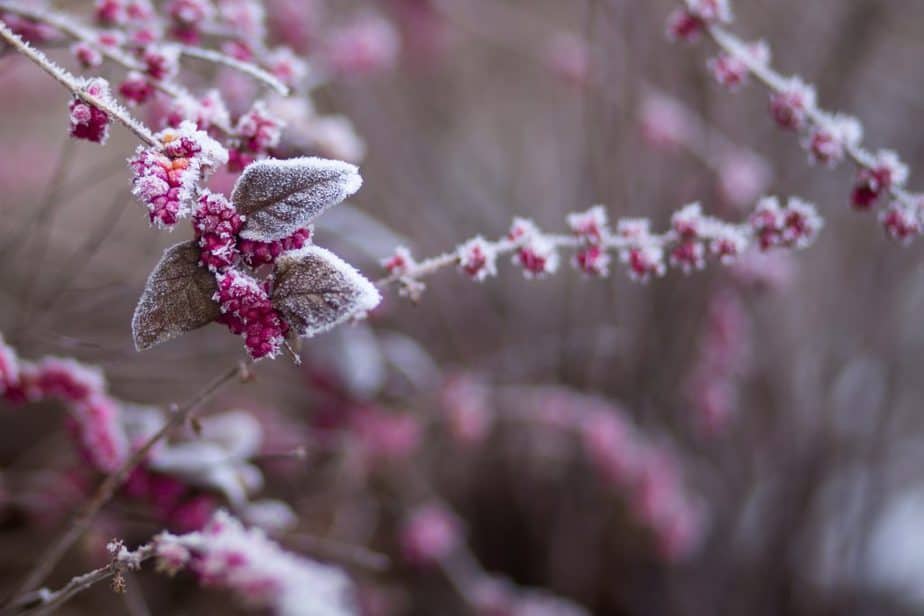
What crops you can grow during winter will depend not only on your local climate but also on what type of greenhouse you have—and how well you winterize it.
To grow a winter greenhouse while snow is blanketed outside takes some planning and effort. Read through our guide to Getting Your Greenhouse Ready For Winter.
Tips to Grow a Winter Greenhouse – Choosing Winter Crops

- Read seed catalogs and packet descriptions closely.
- Select varieties that are hardy in cold temps.
- Select crops that don’t need a lot of full sun.
- Consider what you want to eat for your winter meals! Think: stews, soups, roasts, casseroles.
- Learn your Climate Zone.
- Climate Zones indicate the “average” weather in a particular part of the globe. Learning your local zone will allow you to. Learning your local climate zone will give you a wealth of information about which plants you can grow in your greenhouse, and even when to plants and harvest.
- Find your Zone on the USDA website.
Root Veggies
Roots veggies are winter all-stars! Since they grow their fruits underground, they’re already partially insulated. You can easily keep them even warmer with mulching or a hay “blanket”.
Most root veggies are happy in containers, making them perfect for arranging your greenhouse to optimize heat retention and light exposure. If you want to grow a winter greenhouse that’s effective, then this is a lesson worth learning quickly.
These yummy veggies also store very well for long periods of time in cool places! (Root cellar, anyone?)
Try growing:
- Carrots
- Beets
- Turnips
- Onions
- Potatoes
- Celeriac/celery root (which only has a little relation to celery)
- Jerusalem artichoke/sunchoke (which has absolutely nothing to do with artichokes)
Bonus: Roots veggies transplant quite well. You can transplant root veggies to your outdoor garden in the spring.
Leafy greens
Delicate fancy greens won’t do too well in winter, but who wants a light salad in the winter, anyway!
While there are some winter lettuces that can thrive in your greenhouse, it’s my opinion that dark, hearty greens are the way to go in the cold season. Add them to winter soups and stews, pilafs, and throw them under roasted meat or roots veggies. Yum!
Try growing:
Brassicas
Also called cruciferous vegetables, these are your classic wintery veggies. They’re roastable, stew-able, and full of nutrients and fiber to feed your hungry tummy all through winter.
Brassicas are notoriously attractive to pests; cultivating bug-prone crops in a greenhouse is a double-edged sword. (Read more about the pros and cons of greenhouse cultivation here: Is A Greenhouse Worth It?).
Some cold-tolerant brassicas do take a long time to mature, which is only natural in season with shorter days. Make sure they are placed in a section of the house with sufficient light and be patient. This patience is a must-have when it comes to growing a winter greenhouse because the shorter days yield less photosynthesis resulting in slower maturing plants.
Try growing:
Herbs
Herbs tend to be some of the most delicate things to grow, so they may require you to pay extra attention to your greenhouse’s heat and insulation situation.
Herbs that grow in “bushes” and those that have needle-like leaves (sage, rosemary, thyme, etc.) can do well year-round (in some climates, even without a greenhouse!). But they are extremely sensitive to over-humid conditions, so be extra-aware of your ventilation if you choose to grow these fragrant beauties.
Plant herbs in late fall to be ready to harvest in winter.
- Parsley: extremely hardy and delicious in many winter dishes.
- Mint: quite hardy and there are so many varieties!
- Coriander
- Rosemary
- Tarragon
Beware of trying basil. There’s a reason its flavor reminds us invariably of summer.
Tending Winter Greenhouse Crops
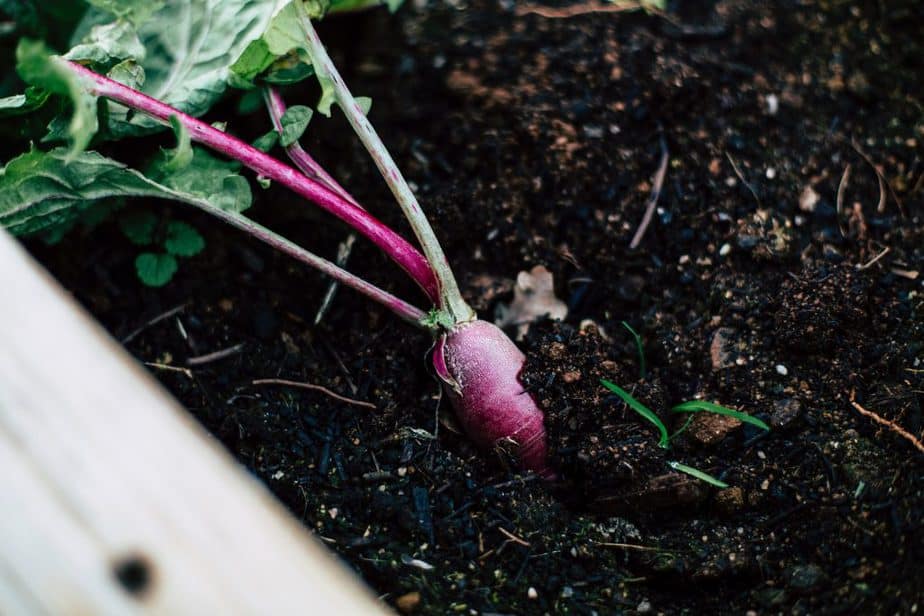
Harvesting in Winter
You will likely not be planting or starting seeds during the winter, though there are exceptions. Most winter-harvest vegetables need to be planted in mid-summer or early autumn (again, depending on your climate.)
Ideally, crops should be just about ready to harvest when the really cold part of winter drops in and days shorten dramatically.
Determine when to plant your new winter greenhouse crops, look at the seed packet or in the seed catalog and count backwards. But! remember that in Fall and Winter, days shorten. With less sunlight, plants grow more slowly.
Add on 10-14 days when estimating your crops’ harvest schedule.
Plant Placement
If you have a big greenhouse, it’s time to consolidate. Move your plants into the sunniest spot. To grow a winter greenhouse you need to get the idea of a mass grow operation out of your mind.
If you have a greenhouse heater, heat sink, or thermal mass, gather the plants near that source. Once you’ve created a “winter corner,” you can further protect your plants by hanging simple, insulating curtains inside the house.
Learn more in our guide to Getting Your Greenhouse Ready For Winter.
Watering
What about watering in the winter? Will plants need more water, less water?
As with so many aspects of your greenhouse growing, watering your winter plants will depend on your climate. The fall and winter in many parts of the world can be unpredictable year-to-year.
Since sunlight hours lessen in winter months, your plants will not be growing as fast. That means they won’t be photosynthesizing as heroically.
In other words: you’ll likely need to water plants less often in winter!
Don’t Overwater!
In any season, it’s a major no-no to overwater your plants. But during winter, it becomes especially disastrous.
Why? You can guess, if you’ve read this far!
Less sun, less heat, less evaporation. More mold, more pests, more energy to fix your moisture mistakes.
Heating a Greenhouse in the Winter
The purpose of this article is to learn how to grow crops in a greenhouse during the winter, and for most people, that will involve battling the cold. Heating your greenhouse to some degree will be necessary if the internal temperatures ever begin to drop below 50°F or so.
Here is a custom Greenhouse Heat Loss Calculator that we built! It will return a value measured by btu/hr (British thermal units/hour), the standard unit of measurement for heat loss (and heating, kinda). Once you know the BTU/hr, you just have to buy a heater that has an equal or greater BTU rating.
Ventilation
Good ventilation is always essential in greenhouse operations, but it is exceptionally vital during the winter.
Condensation occurs more intensely in winter, when the temperature variant between inside the greenhouse and the air outside is more dramatic. And just like overwatering, it can be challenging to correct.
This is one of the trickier aspects of winter greenhouse maintenance since opening vents and doors will let cold air inside. Be sure your greenhouse has good auto-vents, fans, and cross-breeze. Learn more about the technical aspects of all these here: Guide to Greenhouse Cooling and Ventilation.
Is A Winter Greenhouse Worth It?
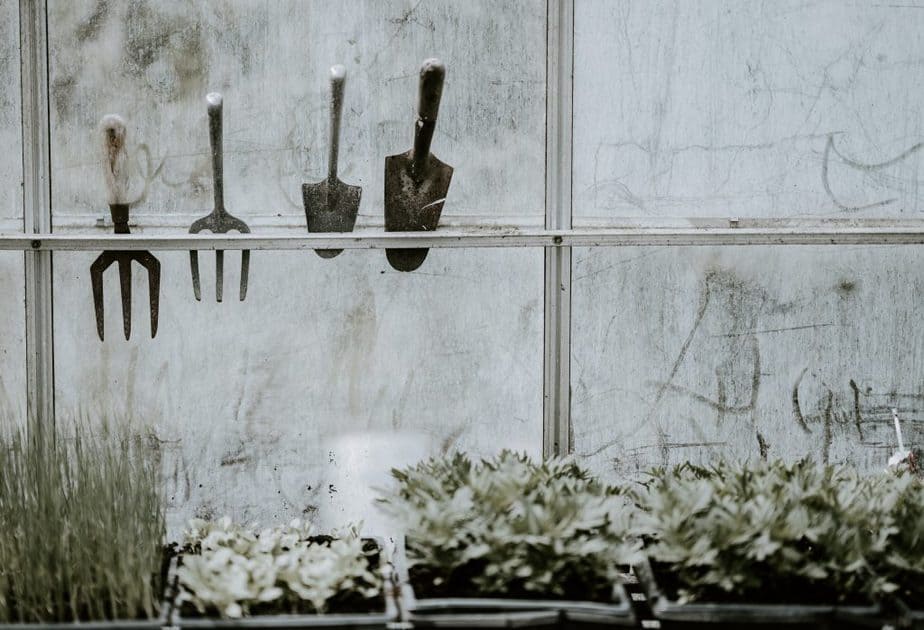
Everything is a bit more challenging and less fun in winter. Greenhouse and otherwise. As someone who spent 23 years of my life in a very snowy, cold part of the Northeast United States, just trust me on that.
In your greenhouse in particular, that means paying more attention to humidity, more time- and cost-intensive solutions to climate control, less variety of crops, and less frequent harvests.
(Pssst—learn how to heat your greenhouse carbon-free here: Keep Your Greenhouse Warm Without Electricity.)
But the reward of a winter greenhouse garden is immense. Not least of all, your greenhouse will be a winter oasis! Warm your frosty finger and cheeks as you care for your plants.
The biggest reward of all is watching a big pot of yummy stew simmering on the stove—full of vegetables that you grew!—as snowflakes fall outside. That’s worth it!

